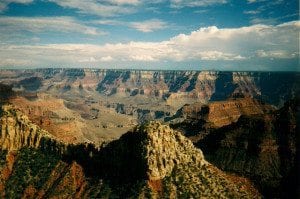Plant Materials Center Restores South Rim’s Native Plants
There are more than 1,500 known species of vascular plants, 167 species of fungi, and 64 species of moss found in Grand Canyon National Park.
This is largely due to the 8,000 foot elevation change from the river up to the highest point on the North Rim.
For more than two decades, USDA’s Natural Resources Conservation Service (NRCS) has been growing seeds for national parks. When the Grand Canyon South Rim visitor center underwent renovation in 2008, the national Park Service turned to the NRCS Plants Materials Center in Los Lunas, N.M., to produce the necessary seed to restore Grand Canyon’s native grasses. Now, the South Rim is covered with green grasses surrounding roads, parking lots, and popular tourist points.
According to the park’s horticulturalist, native grasses keep the invasive weeds from coming through. They also provide food for deer and elk.
In the Grand Canyon, the Park Service uses seed to restore distressed areas where trails, walkways, parking lots and roads have been removed or added.
But finding and growing the seeds is not an easy process. Since each plant species has developed an advanced genetic makeup specific to each area of the parks, only seed native to each park area can be used. Native plants are better able to resist damage from drought, freezing, and common diseases.
Here’s how it works. Small amount of specific seeds are collected and provided to the NRCS for planting. The seeds are started in a greenhouse before being transplanted to a nearby field.
Each planted seed has the ability to produce hundreds of seeds for several years. At harvest time, the seeds are bagged and delivered to national parks.
The grasses reduce erosion, offer food and shelter for wildlife, and beautify the area so visitors can truly enjoy their Grand Canyon tour.
Next up is the task of replanting Orphan Mine, a Grand Canyon mining site used as a source of uranium for nearly 20 years back in the 1950s.


